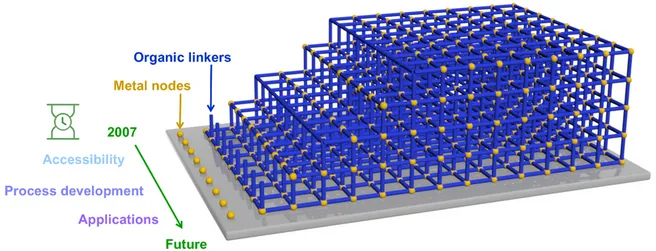Abstract of the full article available here:
Metal–organic frameworks (MOFs) are an emerging class of porous materials composed of organic linkers and metal centers/clusters. The integration of MOFs onto the solid surface as thin films/coatings has spurred great interest, thanks to leveraging control over their morphology (such as size- and shape-regulated crystals) and orientation, flexible processability, and easy recyclability. These aspects, in synergy, promise a wide range of applications, including but not limited to gas/liquid separations, chemical sensing, and electronics. Dozens of innovative methods have been developed to manipulate MOFs on various solid substrates for academic studies and potential industrial applications. Among the developed deposition methods, the liquid-phase epitaxial layer-by-layer (LPE-LbL) method has demonstrated its merits over precise control of the thickness, roughness, homogeneity, and orientations, among others. Herein, we discuss the major developments of surface-mounted MOFs (SURMOFs) in LbL process optimization, summarizing the SURMOFs’ performance in different applications, and put forward our perspective on the future of SURMOFs in terms of advances in the formulation, applications, and challenges. Finally, future prospects and challenges with respect to SURMOFs growth will be discussed, keeping the focus on their widening applications.
